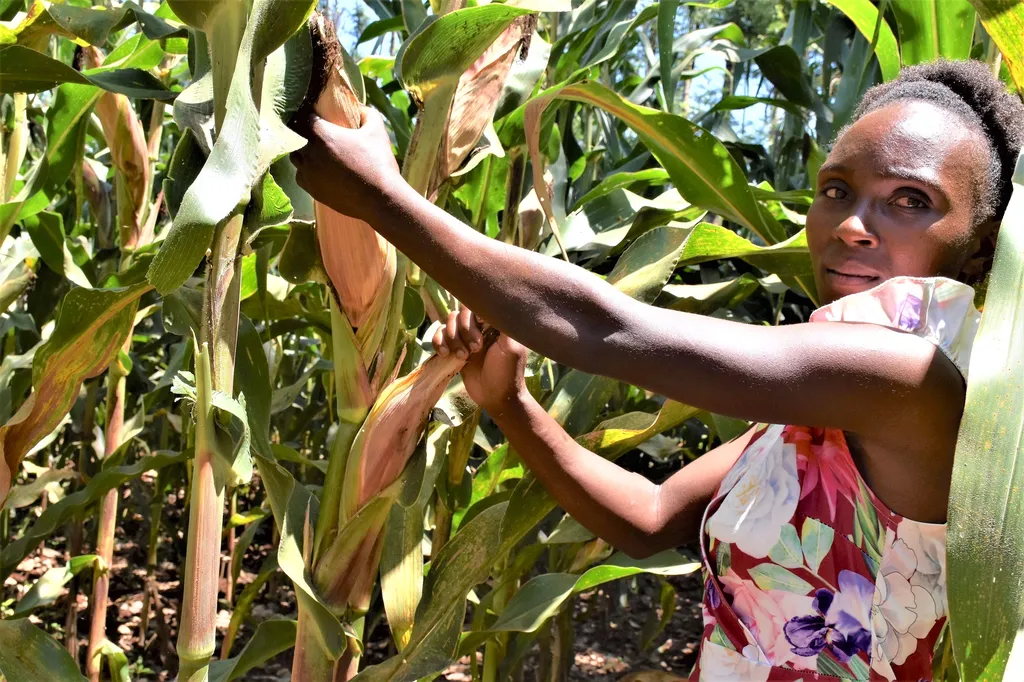In the heart of Tamil Nadu, India, a groundbreaking study has unlocked new possibilities for maize breeding, offering a beacon of hope for farmers grappling with water scarcity. The research, led by M. James from the Department of Crop Improvement at the College of Post Graduate Studies in Agricultural Sciences, Meghalaya, has identified diverse maize inbred lines that could revolutionize hybridization programs and boost yields under water-deficient conditions.
The study, published in the International Journal of Bio-Resource and Stress Management, evaluated the performance of 52 maize inbreds during the rabi season of 2018-2019. The focus was on identifying genotypes that thrive under water stress, a critical factor for farmers in arid and semi-arid regions. “The goal was to find genotypes that not only perform well under water deficit conditions but also exhibit genetic diversity, making them ideal candidates for hybridization,” James explained.
The research employed both molecular and phenotypic analyses to assess genetic diversity. Ten quantitative traits were studied, including single plant yield (SPY), days to 50% tasseling (DT), and silking. The genotype G34 emerged as a standout performer, showcasing the highest mean SPY of 135.6 grams. Other notable performers included G11, G32, G38, and G48. Meanwhile, genotypes G20 and G50 demonstrated early tasseling and silking, completing these stages in less than 55 days.
The study also revealed high heritability and genetic advance for traits like leaf area, number of kernels per cob, and SPY, indicating the influence of additive gene action. Path analysis further highlighted that SPY had positive direct effects from several key traits, including days to tasseling, plant height, leaf area, cob length, number of kernels, and test weight.
Cluster analysis based on Mahalanobis (D2) diversity analysis grouped the 52 genotypes into five clusters, while molecular clustering using six markers divided the selected fourteen genotypes into six clusters. The overlapping results from both analyses pinpointed genotypes G34, G20, G16, G48, G50, G40, and G34 as prime candidates for future hybridization programs. These genotypes could potentially lead to the development of superior, high-yielding hybrids that are resilient to water stress.
The commercial implications of this research are substantial. As water scarcity becomes an increasingly pressing issue, the demand for drought-resistant crops is on the rise. The identified maize inbred lines offer a promising solution for farmers, potentially enhancing crop yields and ensuring food security in water-deficient regions. Moreover, the insights gained from this study could pave the way for more targeted and effective breeding programs, accelerating the development of climate-resilient maize varieties.
“This research not only identifies promising genotypes but also provides a robust methodology for assessing genetic diversity in maize,” James noted. “It sets a foundation for future studies aimed at improving crop resilience and productivity under challenging environmental conditions.”
As the agricultural sector continues to grapple with the impacts of climate change, studies like this one are crucial. They offer a glimpse into the future of crop breeding, where science and technology converge to create resilient, high-yielding varieties that can withstand the pressures of a changing climate. The identified maize inbred lines could soon become the cornerstone of hybridization programs, driving innovation and sustainability in the agriculture sector.

